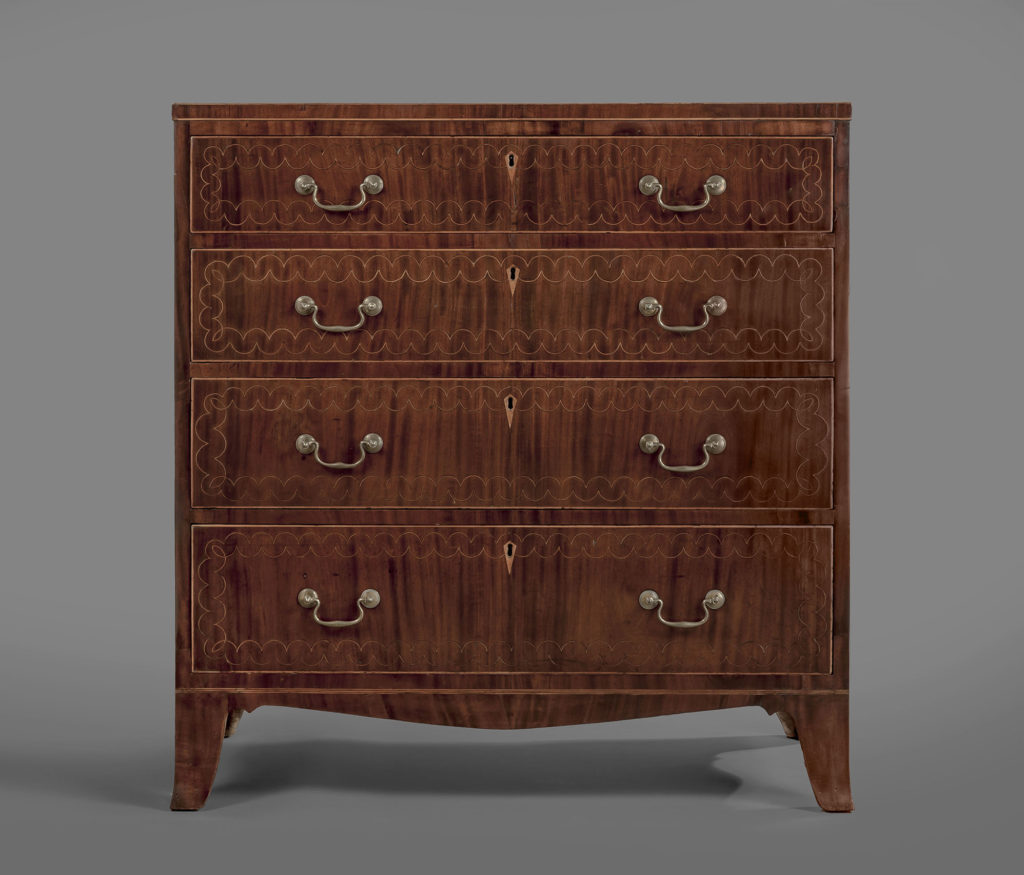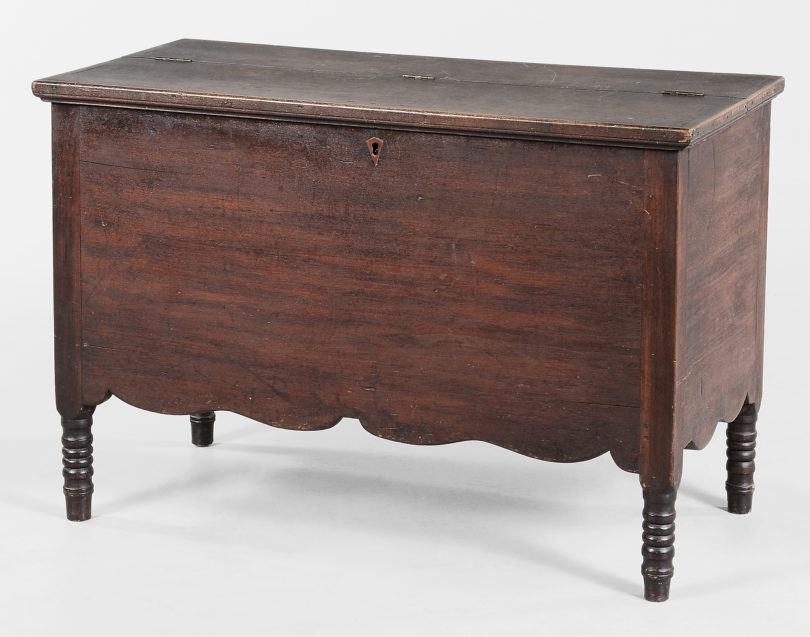A generation ago, few people thought much of Georgia decorative arts, but 20 years of hard work by the Georgia Museum of Art at the University of Georgia have changed that impression.
The Georgia Museum of Art presented the first formal exhibition of Georgia decorative arts in 1975, and other museums in the state followed suit. In 2000, the museum opened the Henry D. Green Center for the Study of the Decorative Arts. The center organizes a symposium held every other year to present and publish research on the decorative arts that is among the best-attended events of its kind.
To celebrate the 20-year anniversary of the Green Center, the museum has organized the exhibition “Material Georgia 1733–1900: Two Decades of Scholarship,” which will be on view Nov. 16 through March 15, 2020. This exhibition takes a comprehensive look at Georgia’s diverse contributions to early decorative arts and summarizes the scholarship that has been done in the 20 years since the Green Center’s founding. It focuses on revealing new discoveries made in the field, pointing a way forward and making the case Georgia can hold its own against any other state in terms of the quality of its decorative arts.
As the largest state east of the Mississippi River, Georgia was historically a prominent market for American decorative products, but much of the furniture made there was shipped to wealthier urban areas in the northern U.S. British taste ruled in Georgia collections until collectors like Bill and Florence Griffin and dealer Deanne Deavours shifted the focus to native products.
“Material Georgia” surveys Georgia decorative art in media including furniture, silver, pottery, textiles, basketry and portraits. Many material elements have yet to be researched but this exhibition lays the groundwork for doing so in the future as the center embarks upon its next 20 years. “Material Georgia” is the first of two planned exhibitions; the next exhibition is planned for 2022 and will cover decorative arts from the 20th century to the present, including studio craft.
“Material Georgia” will include the largest group of 18th-century pieces of Georgia furniture on view yet, demonstrating both cultural influences and regional style. The exhibition and its accompanying hardcover exhibition catalog, published by the museum and available in the Museum Shop, will present new scholarship, attributions and interpretations. It also reintroduces the museum’s silver collection in light of new findings and will put forward fresh material on political silver. Recent discoveries show that, contrary to prior belief, silver was made in Georgia and its market affected national trends, social history and food culture.
Pottery is one of the best documented forms of applied art in Georgia, and the Green Center’s collection has grown into a broad and representative sampling. “Material Georgia” presents areas of the craft that have not been previously researched and makes resonant historical connections. Notably, the exhibition features work by Lucius Jordan, Georgia’s earliest native-born prominent trained potter. It also includes significant textiles woven by yeoman women farmers, African-style baskets and portraits. These categories of craft do not cover every part of Georgia decorative arts, but the exhibition contextualizes different media and objects within the state’s cultural history. As a whole, this exhibition shows how Georgia’s early decorative art is relevant to the region and to the nation.
“The great narrative of decorative arts is its social history; the foremost conditioner of their design is their utility,” said Dale Couch, curator of decorative arts. “These two factors alone provide major opportunities for study by numerous disciplines and bring a special educational opportunity to UGA.”
This exhibition is sponsored by the Forward Arts Foundation, the Frances Wood Wilson Foundation, Georgia Humanities, the W. Newton Morris Charitable Foundation and the Friends of the Georgia Museum of Art.

Chest with inlay from North Georgia, possibly Nacoochee Valley, ca. 1805–25. Mahogany veneer, possibly walnut, and light wood inlay and yellow pine, 40 1/2 x 38 1/2 x 20 3/4 inches. Private collection, promised bequest to Georgia Museum of Art.
Related events at the museum include:
- A public tour with curator Dale Couch on Dec. 3 at 2 p.m.
- A holiday-themed Toddler Tuesday on Dec. 10 at 10 a.m. (space is limited; email Madison.hogan@uga.edu or call 706-542-4883 to reserve a spot)
- A holiday-themed Family Day on Dec. 14 from 10 a.m.-noon
- An Art Cart (After Class) on Dec. 18 from 3 to 4:30 p.m.
- The 10th Henry D. Green Symposium of the Decorative Arts: “Georgia Matters: Celebrating Two Decades of Scholarship,” at the UGA Center for Continuing Education and Hotel from Jan. 30 to Feb. 1 ($100–$325; save the date at 706-542-4199 or gmoa@uga.edu)
- 90 Carlton: Winter, the museum’s quarterly reception, on Jan. 30 from 5:30-7:30 p.m. ($15, $10 for Friends of the Museum and Supporters, free for current members; galleries open until 8:30 p.m.)
All events are free and open to the public unless otherwise noted.








